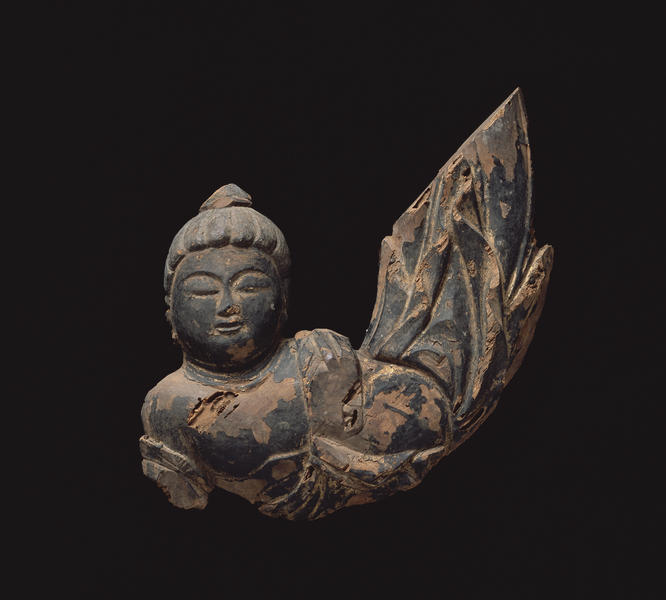飛天
- 日本
- 平安時代後期
- 11c
- 木造
上半身に条帛(じょうはく)をまとい下半身に裙(くん)を着す菩薩形像で、腰を海老状に曲げて空中を飛んでいる。定朝(じょうちょう)にはじまるとされる飛天光(ひてんこう)の飛天は雲に乗り奏楽あるいは供養の姿をとるが、雲に乗っていない本像はその意味で特異である。あるいは奈良時代の光背に倣ったもので、もっとも古い形式を伝える飛天光かとも推定される。
大ぶりの頭部でそこに配された目鼻もまた大づくりであり、定朝の時代にさかのぼる古様がうかがえる。飛天光の成立に手がかりを与える一作である。
Catalogue Entry
This bodhisattva-style figure wears a johaku decorative scarf on its upper body and a skirt-like kun from the waist down. It is flying through the air with the lower part of its body arched upward. Images of flying celestial beings (hiten) decorate the halos of many Buddhist statues, and the hiten halo (hitenko) style is thought to have begun with the work of sculptor Jocho (? - 1057). Such celestials are generally depicted as riding on clouds and either playing music or posturing in prayer. The present work is thus unique in that it is not riding on a cloud. It is also conjectured to be based on Nara-period halos and thus to represent the oldest style of hitenko. The celestial being has a slightly oversize head with eyes and nose that are also rather large, indicating an old style dating from Jocho’s time. This is one of the works that helped to establish the hitenko as an important device in Japanese Buddhist sculpture.
